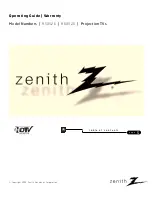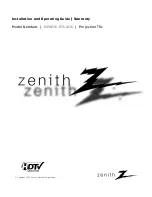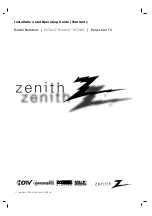
2.7 Teleprotection for Distance Protection (optional)
195
7SD5 Manual
C53000-G1176-C169-1
As soon as the distance protection has detected a fault in the reverse direction, a
blocking signal is transmitted (e.g.
„Dis.T.SEND“
, No. 4056). The transmitted signal
may be prolonged by setting address
2103
accordingly. The blocking signal is
stopped if a fault is detected in the forward direction (e.g.
„Dis.T.BL STOP“
, No.
4070). Very rapid blocking is possible by transmitting also the output signal of the jump
detector for measured values. To do so, the output
„DisJumpBlocking“
(No. 4060)
must also be allocated to the transmitter output relay. As this jump signal appears at
every measured value jump, it should only be used if the transmission channel can be
relied upon to respond promptly to the disappearance of the transmitted signal.
If there is a disturbance in the signal transmission path the overreaching zone can be
blocked via a binary input. The distance protection operates with the usual time
grading characteristic (non delayed trip in Z1). The overreach zone Z1B may, howev-
er, be activated by internal automatic reclosure or external criteria via the binary input
„>Enable ARzones“
.
The occurrence of erroneous signals resulting from transients during clearance of ex-
ternal faults or from direction reversal resulting during the clearance of faults on par-
allel lines, is neutralized by the „Transient Blocking“. It prolongs the blocking signal by
the transient blocking time
TrBlk BlockTime
(address
2110
), if it has been present
for the minimum duration equal to the waiting time
TrBlk Wait Time
(address
2109
).
It lies in the nature of the blocking scheme that single end fed short-circuits can also
be tripped rapidly without any special measures, as the non feeding end cannot gen-
erate a blocking signal.
2.7.10 Pilot Wire Comparison
In the pilot wire comparison the overreaching zone Z1B functions as instantaneous
zone at both ends of the protected line. Zone Z1B is set to reach beyond the next sta-
tion. The pilot wire comparison avoids non-selective tripping.
The information exchange between both line ends is carried out via a closed quiescent
current loop (Figure 2-81) that is fed by a substation battery. One NC contact must be
allocated for each signal output, the receiving input must be configured to „low“-active.
As an alternative two auxiliary relay combinations (e.g. 7PA5210-3D) are possible for
inverting the contact.
In the quiescent state the pilot wires carry direct current that, at the same time, moni-
tors the healthy state of the connection.
If the distance protection picks up, the following signal appears:
„Dis.T.SEND“
. The
NC contact is opened and the pilot wire loop is initially interrupted. A trip by Z1B is
blocked via the receiving input
„>DisTel Rec.Ch1“
. If the protection system then
detects a fault within the overreaching zone Z1B, the send signal resets. The NC
contact returns to its quiescent state (closed). If the loop in the remote station is also
closed after the same sequence, the loop is energized again: the tripping is again re-
leased at both ends.
In case the short-circuit occurred outside the protected line the pilot wire loop is also
interrupted by the pickup of both devices (both NC contacts
„Dis.T.SEND“
are
opened). Since the send signal will not reset at least at one of the line ends (fault is
not in line direction in zone Z1B), the loop at that end will remain open. Both receiving
inputs are deenergized and block the tripping (because of L-active). The other dis-
tance stages including Z1, however, operate independently so that the back-up pro-
tection function is not affected.
www
. ElectricalPartManuals
. com
















































